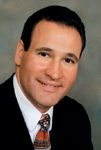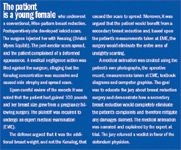- Acne
- Actinic Keratosis
- Aesthetics
- Alopecia
- Atopic Dermatitis
- Buy-and-Bill
- COVID-19
- Case-Based Roundtable
- Chronic Hand Eczema
- Chronic Spontaneous Urticaria
- Drug Watch
- Eczema
- General Dermatology
- Hidradenitis Suppurativa
- Melasma
- NP and PA
- Pediatric Dermatology
- Pigmentary Disorders
- Practice Management
- Precision Medicine and Biologics
- Prurigo Nodularis
- Psoriasis
- Psoriatic Arthritis
- Rare Disease
- Rosacea
- Skin Cancer
- Vitiligo
- Wound Care
Article
Medical animations: A useful tool in medical malpractice cases
National report - Medical malpractice is big business.Estimates are that medical liability costs in the United Statesexceed $40 billion annually.
National report - Medical malpractice is big business. Estimates are that medical liability costs in the United States exceed $40 billion annually.

The past few years have seen sharp surges in malpractice insurance rates driven, in part, by greater frequency of litigation, larger awards and/or increased defense costs. The average payout, as well as the number of cases with verdicts exceeding $1 million, have increased substantially. Attorneys often point to jurors' limited medical understanding to explain these verdicts.

Medical animations: What are they?
Traditionally, illustrations presented at trial have been diagrams or sketches presented to sharpen a visual image for the jury. Medical illustrations may be used to demonstrate anatomy or physiologic pathways to help explain pathologic circumstances. Surgical procedures can be illustrated using diagrams from textbooks or journals. But computer technology and advanced software applications have allowed us to take medical illustrations to the next level.
Cosmetic surgery and dermatology are very visual specialties. Not only are results often visible for the entire world to see, the physician typically photographs these procedures. The photo-documentation incorporated into these procedures creates a unique opportunity for useful medical illustration at trial.
In cases of alleged medical negligence, information is gathered from these photographs, as well as medical records, operative reports, sworn testimony, expert medical examination and journal or text references. In order to defend against admissibility challenges at trial, the presentation is totally customized to the plaintiff's circumstances. The information is then loaded onto the computer and using advanced software, is enhanced into a dynamic medical animation.
A proposed surgical correction may have a significant impact on the amount of damages that may be claimed by, or awarded to, a plaintiff. Animations may also be used to fill in gaps of the proposed corrections or even previous surgeries, where photographs may not be obtainable.
The lay public often tends to minimize plastic surgery procedures. Despite complex anatomy and surgical physiology, aesthetic procedures are often relegated to simplistic terms such as a "boob job" or a "nose job." Ironically, these procedures are often difficult to conceptualize, even by other physicians. The medical animation gives jurors, no matter their personal experience or background, a unique view into a customized operation.
The animation team
The animation process is coordinated by the attorney, the expert physician and the computer graphic artist. The attorney determines the goals to be emphasized by the animation. These goals may be to explain the steps and decision points involved in a particular surgery or how a revisional procedure could mitigate potential damages.
The expert physician must interface between the goals of the attorneys and the skill of the graphic artist. It is up to the expert physician to incorporate all of the available facts and accurately synthesize the information into a logical educational sequence.
Newsletter
Like what you’re reading? Subscribe to Dermatology Times for weekly updates on therapies, innovations, and real-world practice tips.
















